2-3. We should here take the opportunity to look where Metoro
used this word kikiu in the C text. On side a of the
tablet there is only one such place:
| Oct 6 |
7 (280) |
8 (→ 118 +
163) |
9 |
10 |
 |
 |
 |
 |
 |
|
Ca1-16 |
Ca1-17 |
Ca1-18 → *18 + 100 |
Ca1-19 |
Ca1-20 |
| koia ka hua |
koia ki te henua |
kiore
kikiu - te
henua |
te maitaki - te
kihikihi |
hakaraoa - te henua |
|
Al Batn Al
Hūt-26 (Belly of the Fish)
/
Revati-28 (Prosperous)
/
1-iku
(Field Measure)
MIRACH
(Girdle) = β
Andromedae,
KEUN MAN MUN (Camp's South Gate) =
φ
Andromedae
(16.0),
ANUNITUM = τ
Piscium
(16.5),
REVATI
(Abundant) = ζ
Piscium
(16.9)
REGULUS
(α Leonis) |
ν Phoenicis (17.4), κ Tucanae (17.6)
*159.0 + *182.0 = 341.0 |
No
star listed (18) |
ADHIL (Garment's Train) = ξ
Andromedae
(19.3),
θ
Ceti (19.7) |
KSORA (Knee) =
δ
Cassiopeiae
(20.1),
ω
Andromedae (20.6),
γ
Phoenicis (20.8) |
|
AL DAFĪRAH
(Tuft) = β
Com. Ber. (199.4)
*158.0 = *199.4 - *41.4 |
σ Virginis (200.4)
*159.0 = *200.4 - *41.4 |
γ
Hydrae (201.0),
ι
Centauri (201.4)
*160.0 = *201.4 - *41.4 |
Al Simāk-12 (Lofty) /
Chitra-14 (Bright
One) /
Horn-1 (Crocodile)
/
Sa-Sha-Shirū-19 (Virgin's
Girdle)
/
ANA-ROTO-3 (Middle pillar)
MIZAR =
ζ
Ursae Majoris (202.4),
SPICA
=
α
Virginis,
ALCOR (The Fox) = 80 Ursae
Majoris
(202.7)
SADALMELIK
(α Aquarii) |
71 VIRGINIS
(203.6) |
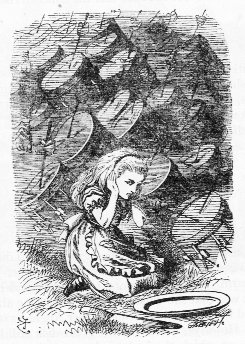
|
Oct 9 (2 * 141) |
*141
|
Febr 27 (365 +
2 * 29) |
|
 |
 |
|
Ca1-19 |
Bb6-10 (213) |
|
ADHIL
(*19) |
*160 |
|
SPICA (*202) |
*343 (→
7 * 7 * 7) |
|
DEC 22 |
23 |
24 (*278) |
25 |
26 (360) |
27 |
28 |
 |
 |
 |
 |
 |
 |
 |
|
Bb6-7 (631) |
Bb6-8 |
Bb6-9 |
Bb6-10 |
Bb6-11 |
Bb6-12 |
Bb6-13 (216) |
|
Febr 24 (420) |
25 |
26 |
27 |
28 (59) |
March 1 |
2 |
|
ki to maitaiki - e mai tae harehare matagi -
ku kikiu - koia i te matagi |
ki te
henua |
ku haga ia ko to nuku - e nuku haga e |
kua motu
te pito o te fenua |
But on side b
of the C tablet there are 5 kikiu places - and all of them
depict figures sitting down →
Ardra, the Moist One, Betelgeuze,
the Pillar to sit by.
 |
*420 |
 |
 |
 |
 |
 |
8 |
|
Ca1-18
→ 4 * 29,5 |
Cb2-22
(438) |
Cb3-2 |
Cb3-6 |
Cb6-28 |
Cb14-11 (732) |
|
64
←Oct 8 → 80 |
2 *
366 ← 732 - 437 =
295 → 10 lunar
synodic months |
What dates and stars characterized these 5 kikiu figures on side
b?
|
Nov 26 (330) |
27 |
28 → Lono |
29 |
30 |
Dec 1 (335) |
|
... The correspondence between the winter solstice and the kali'i
rite of the Makahiki is arrived at as follows: ideally, the
second ceremony of 'breaking the coconut', when the priests assemble
at the temple to spot the rising of the Pleiades, coincides with the
full moon (Hua
tapu) of the twelfth lunar month (Welehu). In the
latter eighteenth century, the Pleiades appear at sunset on 18
November. Ten days later (28 November), the Lono effigy sets
off on its circuit, which lasts twenty-three days, thus bringing the
god back for the climactic battle with the king on 21 December, the
solstice (= Hawaiian 16 Makali'i). The correspondence is
'ideal' and only rarely achieved, since it depends on the
coincidence of the full moon and the crepuscular rising of the
Pleiades ... |
|
 |
 |
 |
 |
 |
 |
|
Cb2-17
(41) |
Cb2-18 |
Cb2-19 |
Cb2-20 |
Cb2-21 |
Cb2-22 (46) |
| manu
rere - toga |
manu |
toga |
ka tuu te toga o te
manu |
kua tapu - no te
manu |
ku
kikiu - i te henua |
|
No
star listed (67) |
Rohini-4 (The Red One)
/
Pidnu-sha-Shame-4 (Furrow of Heaven)
/
ANA-MURI-2 (Rear
pillar - at the foot of which was the place for tattooing)
ALDEBARAN = α Tauri
(68.2),
THEEMIN = υ² Eridani
(68.5) |
No
star listed (69) |
No
star listed (70) |
TABIT =
π³
Orionis
(71.7),
π²
Orionis (71.9) |
π4
Orionis (72.1), ο¹
Orionis (72.4),
π5
Orionis (72.8)
*31.0 = *72.4 - *41.4 |
In view of how contrasts were used in order to enhance meaning
we should notice tapu at Cb2-21.
... Balancing the
notion of tapu, though not in perfect dichotomy, is the
notion of noa. This pertains to mundane, ordinary objects
and functions - household and serving utensils, the acts of
preparing and eating food, the many small and common
interactions of everyday life. Noa
is safe - without preternatural sanction or restricted
association, it is demonstrated by the lifting of the condition
of tapu from a particular environment or object. A newly
built house, ornamented and fresh, would be considered tapu
- unsafe, prohibited, raw with spirit and inaccessible to the
common touch of people. Making the place noa - 'blessing'
it in current terms - would involve ritual, and the crossing of
the threshold, usually by a high-born woman.
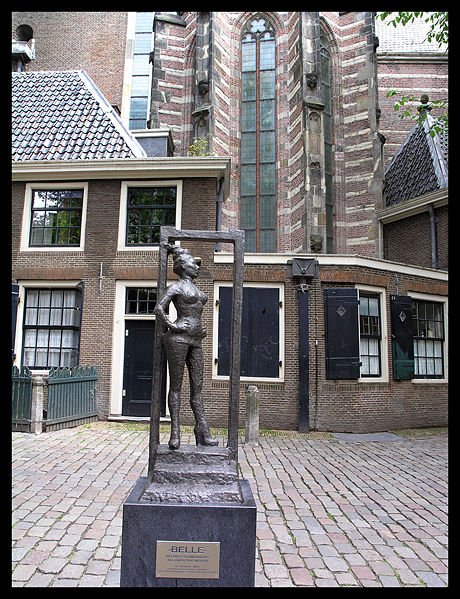
Her special form of tapu would counter
the energies within the house, and thus render it noa,
and safe for general entry. Such ritual continues to be observed
today; even in the context of an ethnological or fine arts
exhibition, these procedures are followed, to appease the
ancestral forces who may generate tapu, which imbues the
objects with dread or beauty ...
|
Dec 2 (336 → 4 * 84) |
3 |
4 |
 |
 |
 |
|
Cb2-23 |
Cb2-24 (440) |
Cb2-25 |
| koia ra |
tagata
tua ivi - te henua |
tagata
tua ivi - ki te henua |
|
Ivi. 1. Bone; fishbone. 2.
Ivi-tia, sewing needle. 3. Ivi tika, spine,
vertebra. 4. Ivi atua, being of the other world.
5. Ivi tumu atua, seer, wizard. 6. Ivi heheu
swordfish. Vanaga. 1. Bone, needle; ivi ika,
fishbone; ivi ohio, needle; ivi tika,
fishbone, backbone; kiko o te ivi tika, pancreas;
ivi heheu, cachalot; ivi tupapaku,
skeleton; ivi uha, to grow (of mankind); tooa
te kiko e ivi i hakarere, to strip the flesh from
the bones; kai ivi, to eat remnants; kore te
ivi, cooked too much. 2. Parent, family, ancestry.
Churchill. To bend down to allow someone to climb on
one's back to be carried (haha); he-ti-atu a
Kaiga i te tua ivi, he-haha-mai Huri Avai, Kaiga
bent his back and Huri Avai climbed on his shoulders.
Vanaga. |
|
π¹
Orionis (73.0),
ο²
Orionis (73.4),
HASSALEH =
ι
Aurigae
(73.6),
π6
Orionis (73.9)
*32.0 = *73.4 - *41.4 |
ALMAAZ (The Male Goat) =
ε
Aurigae
(74.7),
HAEDUS I =
ζ
Aurigae
(74.8) |
HAEDUS II = η Aurigae
(75.9) |
 |
|
Dec 5 |
6 (340) |
 |
 |
|
Cb3-1 (50) |
Cb3-2 (443) |
| E vae
ra - ka oho - ki te henua - kua huki |
ku
kikiu - te henua |
|
5h (*76.1)
ε
Leporis (76.0),
CURSA (Footstool) =
β
Eridani (76.4),
λ
Eridani (76.7)
*35.0 = *76.4 - *41.4 |
μ Aurigae, μ Leporis (77.6) |

|
Dec 7 |
8 (342 → 18 * 19) |
9 |
10 |
 |
 |
 |
 |
|
Cb3-3 |
Cb3-4
(445) |
Cb3-5 (54) |
Cb3-6 |
| ko te
henua - te rima |
e kava |
i haga
rave ika |
ki
kikiu - te henua |
|
ĸ Leporis (78.0),
RIGEL (Foot) =
β
Orionis
(78.1),
Flaming Star = IC405
(78.2),
CAPELLA (Mother Goat) =
α
Aurigae (78.4),
ο
Columbae,
τ
Orionis (78.8)
*37.0 = *78.4 - *41.4
THUBAN (α Draconis) |
λ Aurigae (79.0), λ Leporis (79.6), ρ Aurigae (79.7) |
Shur-narkabti-sha-iltanu-5
(Star in the Bull towards the north)
σ
Aurigae (80.4), BELLATRIX (Female Warrior) =
γ
Orionis, SAIF AL JABBAR (Sword of the Giant) =
η
Orionis
(80.7),
ELNATH (The Butting One) =
β
Tauri =
γ
Aurigae
(80.9) |
ψ
Orionis (81.1),
NIHAL (Thirst-slaking Camels) =
β
Leporis
(81.7) |
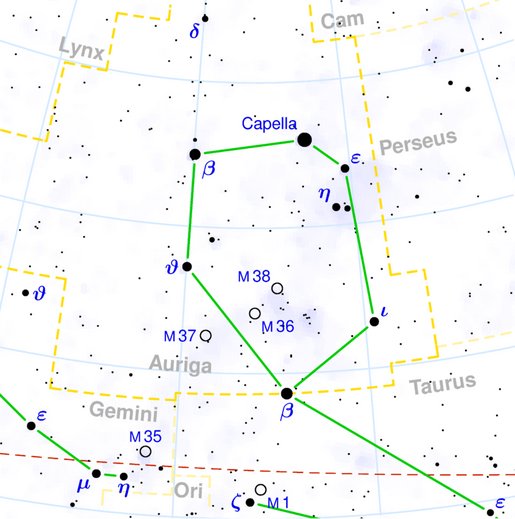 |
| Dec 11 (345) |
12 |
Lucia |
 |
 |
 |
|
Cb3-7 (448) |
Cb3-8 (57) |
Cb3-9 |
| ko te
maro - ko te tagata |
kua hua
te tagata |
ko te
tagata |
|
KHUFU
MINTAKA
(Belt) = δ
Orionis,
υ
Orionis (82.4),
χ
Aurigae (82.5),
ε
Columbae (82.6)
*41.0 =
*82.4 - *41.4
→ 41 Arietis (Bharani) |
KHAFRE
Al Hak'ah-3 (Brand)
/
Mrigashīrsha-5
(Stag's Head)
/
Turtle Head-20 (Monkey)
/
Mas-tab-ba-tur-tur (Little Twins)
ARNEB =
α
Leporis, CRAB NEBULA = M1 Tauri
(83.0,
φ¹
Orionis (83.1),
HEKA =
λ
Orionis, ORION NEBULA = M42
(83.2),
φ²
Orionis (83.6),
ALNILAM (String of Pearls) =
ε
Orionis
(83.7) |
MENKAURE
Three Stars-21 (Gibbon)
/
Shur-narkabti-sha-shūtū-6 (Star in the Bull towards the
south)
/
ANA-IVA-9
(Pillar of exit)
HEAVENLY GATE =
ζ
Tauri,
ν
Columbae (84.0),
ω
Orionis (84.2),
ALNITAK (Girdle) =
ζ
Orionis,
PHAKT (Phaet) =
α
Columbae
(84.7) |
 |
|
Dec 14 |
15 |
16 (350) |
 |
 |
 |
|
Cb3-10 (451) |
Cb3-11
(60) |
Cb3-12 |
| te
taketake |
henua |
kiore -
henua |
|
Take.
The Marquesans are the only people who own to
a distinctive national name, and retain a tradition of
the road they travelled from their original habitat,
until they arrived at the Marquesan Islands. They call
themselves te Take, 'the Take nation'.
Fornander. Take, Tuvaluan for the Black Noddy (Anous
Minutes). The specific epithet taketake is
Māori for long established, ancient, or original. In the
Rapa Nui mythology, the deity Make-make
was the chief god of the birdman cult, the other three
gods associated with it being Hawa-tuu-take-take
(the Chief of the eggs) his wife Vie Hoa and
Vie Kanatea. Wikipedia.
Mamari.
Egg, fish roe. māmari ata rauhau, last small egg
laid by a hen before she turns broody. Vanaga. Egg (of
fowl or fish), (gamamari), (Cf. komari.);
mamari punua, chicken in the shell. Churchill.
Mgv.: kiakia,
the cry of the kotake (a white marine bird.) |
|
ο Aurigae (85.8), γ Leporis (85.9)
YANG
MUN (α Lupi) |
μ
Columbae (86.1),
SAIPH (Sword) =
κ Orionis
(86.5),
τ
Aurigae,
ζ
Leporis (86.6) |
υ
Aurigae (87.1),
ν
Aurigae (87.2),
WEZN (Weight) =
β
Columbae,
δ
Leporis (87.7),
TZE (Son) =
λ
Columbae
(87.9) |
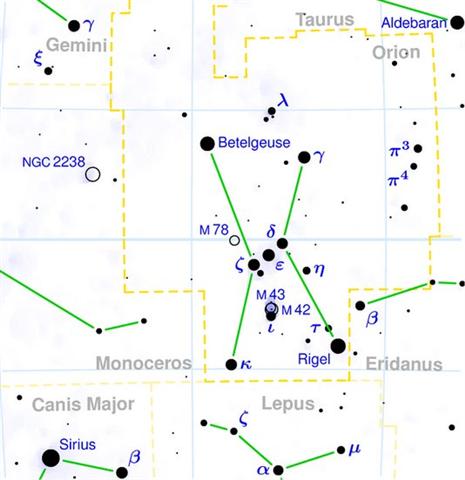 |
|
Dec 17 |
18 |
19 |
 |
 |
 |
|
Cb3-13 (454 → 354 +
100) |
Cb3-14 (→ π) |
Cb3-15 (64) |
| manu
rere |
tagata
- hanau hia |
kiore -
henua |
|
Ardra-6 (The
Moist One)
/
ANA-VARU-8
(Pillar to sit by)
χ¹
Orionis,
ξ
Aurigae (88.1),
BETELGEUZE =
α
Orionis
(88.3),
ξ
Columbae (88.5),
σ
Columbae (88.7)
ZUBEN ELGENUBI (α Librae) |
η
Leporis (89.0),
PRAJA-PĀTI (Lord of Created Beings) =
δ
Aurigae,
MENKALINAN (Shoulder of the Rein-holder) =
β
Aurigae, MAHASHIM (Wrist) =
θ
Aurigae,
and
γ
Columbae (89.3),
π
Aurigae (89.4),
η
Columbae (89.7)
*48.0 = *89.4 - *41.4 |
μ Orionis (90.3), χ² Orionis (90.5) |
 |
It strikes me that from Aldebaran (*68) there should be counted
*20 (→ a score of
things with rounded outline such as eggs, potatoes, etc) to
Betelgeuze (*88), with Capella (*78) at the center.
|
ALDEBARAN |
CAPELLA |
BETELGEUZE |
|
*68 |
*78 |
*88 |
|
Sweet Potatoes (he kumara) given by
Bau to Oti: |
|
1 |
*42 |
he hiva matua |
a Bau. a Oti. |
|
2 |
*43 |
he hiva poki |
|
3 |
*44 |
he renga moe tahi teatea |
|
4 |
*45 |
he renga moe tahi uriuri |
|
5 |
*46 |
he uru omo. |
|
6 |
*47 |
he ree aniho. |
|
7 |
*48 |
he ha.u pu.uriuri |
|
8 |
*49 |
he ha.u.pu.teatea |
|
9 |
*50 |
he okeoke |
|
10 |
*51 |
he apuka. |
|
11 |
*52 |
he ure vai. |
|
12 |
*53 |
he paiki. |
|
13 |
*54 |
he uriuri. |
|
14 |
*55 |
he piu tahi. |
|
15 |
*56 |
he tuitui koviro. |
|
16 |
*57 |
he aro piro. |
|
17 |
*58 |
he pekepeke mea. |
|
18 |
*59 |
he pekepeke uri. |
|
19 |
*60 |
he aringa rikiriki. |
|
20 |
*61 |
he tua tea. |
|
20 |
BEID |
he mamari kiakia. |
|
Mamari.
Egg, fish roe.
māmari ata rauhau, last small egg laid by a
hen before she turns broody. Vanaga. Egg (of
fowl or fish), (gamamari), (Cf. komari.);
mamari punua, chicken in the shell.
Churchill.
Mgv.: kiakia, the cry of the kotake
(a white marine bird.)
Take. The
Marquesans are the only people who own to a
distinctive national name, and retain a
tradition of the road they travelled from their
original habitat, until they arrived at the
Marquesan Islands. They call themselves te
Take, 'the Take nation'. Fornander.
Take, Tuvaluan for the Black Noddy (Anous
Minutes). The specific epithet taketake
is Māori for long established, ancient, or
original. In the Rapa Nui mythology, the
deity Make-make was the chief god of the
birdman cult, the other three gods associated
with it being Hawa-tuu-take-take (the
Chief of the eggs) his wife Vie Hoa and
Vie Kanatea. Wikipedia |
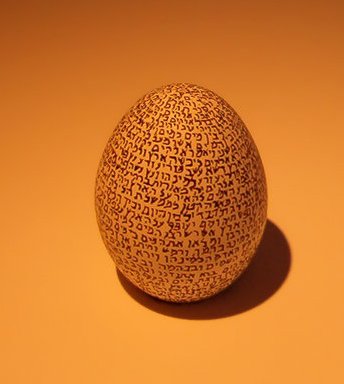
|








































